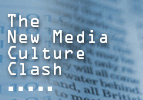



Reifying print culture
As evidenced by the analysis of course syllabi, more opportunities for engaging in new media composition are needed. This demonstrated dearth underscores the call from other scholars for greater inclusion of mutlimodal composition in the college classroom (Cope and Kalantzis 2000; Hayles 2002; and Williams 2001a, 2001b). Further, these increased opportunities must be explicitly stated on course documents and actively discussed in class given the conflicting perceptions of graduate students regarding instructor comfort levels with accepting new media projects [video, 2:09]. In essence, perception is reality. Graduate students will continue to shy away from creating new media scholarship until they see instructors as more willing to value these digital projects.
But there may be more reality to this perception than we care to admit. As Steve Westbrook notes:
Furthermore, because the essay has enjoyed such a longstanding tradition as composition’s preferred genre and, in turn, because we have grown so accustomed to grading the essay, we tend to feel more secure evaluating this from of writing than others even though our criteria may too often remain tacit and the codes and conventions that govern essay-writing may be no more sophisticated or complex than those governing writing in other genres (2006, 467).
Reifying print culture • Moving beyond print • Emerging questions • The discourse key • Works cited • Home